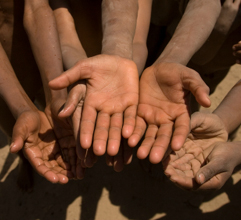Global Scans · No Poverty · Weekly Summary

In September 2015, 193 world leaders agreed to 17 Global Goals for Sustainable Development. If these Goals are completed, it would mean an end to extreme poverty, inequality and climate change by 2030.
Goal 1: End poverty in all its forms everywhere.
- [New] By 2050, almost 200 million people could be lifted out of undernourishment and over 100 million people out of extreme poverty. United Nations Environment Programme
- [New] SNPC's engagement underscores its commitment to AEW's mandate of advancing industrialization and eradicating energy poverty in Africa by 2030. African Energy Week Cape Town | AEC Week - Invest in Af
- [New] The EU set targets for energy savings and on protecting vulnerable households from energy poverty and has obligations on reducing primary energy use in residential buildings and increasing the share of renewables in heating and electricity (Directive 2023/2413). Bruegel | The Brussels-based economic think tank
- Community-based health insurance programs reduce catastrophic expenditures which put more than 930 million people globally at risk of poverty. PubMed Central (PMC)
- Scrapping the two-child cap in Northern Ireland could lift thousands of children in Northern Ireland out of poverty. GOV.UK
- Restoring capital flows is a once-in-a-generation opportunity: it will allow Africa to harness its natural resources to lift millions out of energy poverty, drive industrialization and secure its energy future, all while strengthening global energy security. Pan African Visions
- The initiative, backed by the DeFi Education Fund and several influential crypto policy groups, argues that decentralized financial tools could save people $30 billion a year in fees, money that is currently lost to what researchers describe as the poverty premium. Yahoo Finance
- More than seven in 10 Chinese respondents said they expected AI to play a role in solving a range of societal issues, including climate change, mental illness, poverty and polarization. Al Jazeera
- Closing the gender digital divide alone could lift 30 million women out of poverty and add US$ 1.5 trillion to the global economy by 2030. Bernama
- While the West dominated carbon emissions in the past, future emissions will overwhelmingly come from China, India, Africa, Brazil, Indonesia and other countries clambering out of poverty. New York Post
- Tesla's Optimus robot could go on to become the biggest product of all time by far, and that the new capabilities it offers will actually eliminate poverty. Newsweek
- More than 600 million women and girls live under the threat of deadly conflict, nearly 2 billion lack any form of social protection, and close to 10% live in extreme poverty. U.S.-China Perception Monitor - Bridging the Pacific
- Closing the gender digital divide could benefit 343 million women and girls globally and lift 30 million people out of poverty by 2050. https://vir.com.vn/
- Accelerating investments in care systems, green jobs, education, and social protection could lift 110 million women and girls out of extreme poverty by 2050 and generate US$ 342 trillion in cumulative economic returns. Mexico Business
- Closing the gender digital divide alone could lift 30 million women out of poverty and add USD 1.5 trillion to the global economy by 2030. Antara
- AMR is a threat to sustainable development and the economic future of nations, with the estimated global annual cost of AMR rising to US$ 3.4 trillion by 2030, driving an additional 28 million people to poverty by 2050. Times Kuwait
- More than 351 million women and girls could still be living in extreme poverty by the end of the decade if current trends persist. UN News
- The Gates Foundation will pour at least US$1.4bn into climate adaptation technologies for farmers in sub-Saharan Africa and Asia over the next four years, aiming to bolster regional food security and prevent communities from slipping into poverty as extreme weather intensifies. Climate Proof
- Social Dimension: Brazil will launch a 'Declaration on Hunger, Poverty, and Climate' at COP 30, linking climate action with social equity and the fight against hunger. IASbaba
Last updated: 14 December 2025
